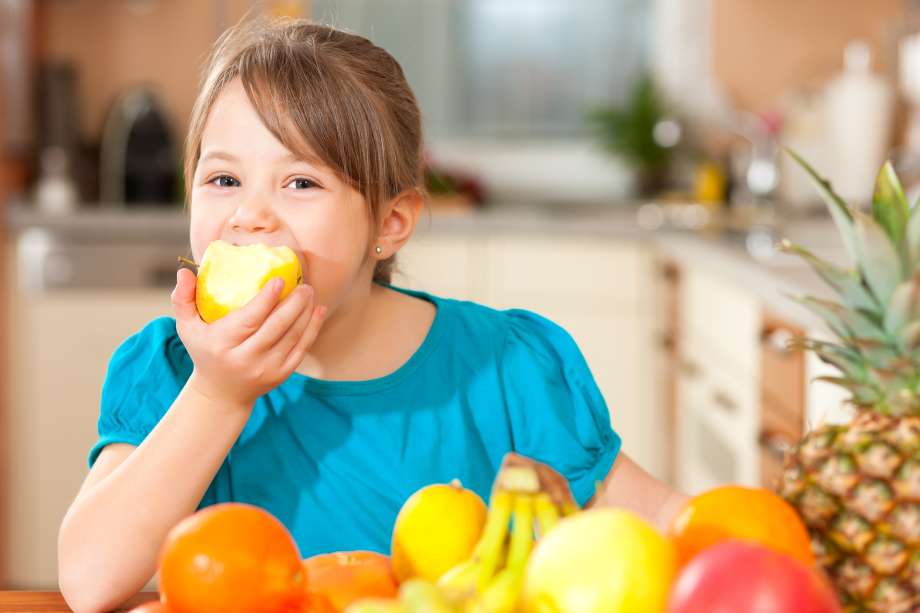Getting to Know Food

In this article, you will find:
Shopping and in the kitchen with kids
Smart Shopping with Kids- Begin shopping with children at a very early age to help them get comfortable with the routine.
- Don't shop on an empty stomach. Go after a meal or a snack to reduce the chances of kids requesting food out of hunger.
- Make a list and stick to it. When kids clamor for junk foods, tell them those items are not on the list.
- Don't rush. Shop when you have time to spend talking with your kids about food.
- Shop once a week. Bringing kids into the supermarket more often only increases their requests for items that are costly and devoid of nutrition.
- Skip the candy aisle, and head for the candy-free checkout aisles, too.
- Let kids help unload bags when you get home and put foods into the cabinets they can reach and into the refrigerator. Hayley, Hannah, and Emma love to drag the bags into the kitchen and put away the food. It doesn't always end up in the right places, but that doesn't bother me.
It happens most every night, and sometimes at lunch, too. My back is turned, but the sound is familiar enough. It's Hannah, dragging a chair twice her size up to the kitchen counter. Invariably, the next thing out of her mouth is: "Mommy, can I help?"
Preschoolers love simple and manageable cooking tasks. At the tender age of four, Hannah has been helping me prepare food for the family for well over a year, and making pancakes and waffles with her father on weekends. Cooking together is a way to spend one-on-one time with a child. It's also a learning experience where kids practice counting, hone fine motor skills, and get a shot of self-esteem for their accomplishments. When a child can say he made it himself, it may even serve to increase his interest in a variety of foods.
Kids can, and should, help in the kitchen. After all, the preparation that goes into meals is a family chore that is typically left to Mom. Getting kids to help means less work for you in the long run!
The following is a guide to what each age can do as far as food preparation goes. Since every child's skills are different, make sure to tailor their designated tasks to fit their abilities.
All Ages
- Wash hands in warm, soapy water and dry thoroughly.
- Don't let them touch or eat raw animal foods, including meat, poultry, and seafood; ditto for cookie, cake, brownie, or quick bread batter containing raw eggs. Thoroughly wash with warm water and soap the surfaces and utensils touched by raw animal foods.
- Wash fruits and vegetables
- Peel bananas
- Stir batters
- Cut out cookies from rolled-out dough, with assistance
- Slice with a sturdy plastic knife soft foods such as bananas, mushrooms, cooked and cooled potatoes and sweet potatoes
- Help pour water, sugar, salt, oil, or other ingredients into batter
- Help measure ingredients such as raisins, chocolate chips, and chopped nuts, rice, and other grains
- Do everything listed above
- Grease pans
- Get mixing bowls, wooden spoons, and canned ingredients and bring them to the kitchen work space
- Open packages
- Roll out or shape dough for cookies
- Shape dough for pizza
- Fill muffin tins with batter
- Use scissors to trim the ends from green beans or to snip fresh herbs
- Help set the table